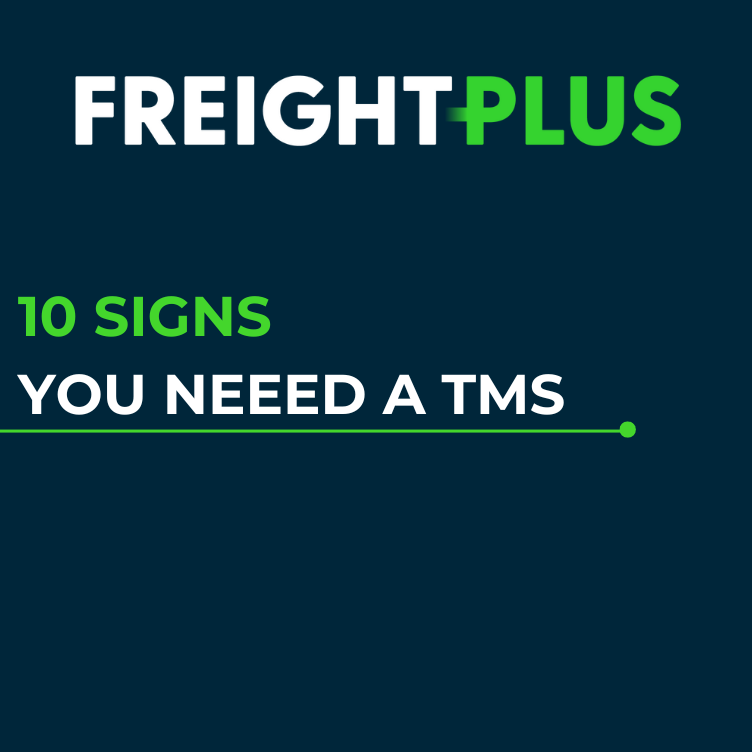10 Signs You Need a Transportation Management System (TMS)
One tool that can make a significant difference in streamlining operations and enhancing efficiency is a Transportation Management System (TMS). But how do you know if your business truly needs one? In this blog, we’ll explore 10 telltale signs that indicate your shipping operations could benefit from implementing a TMS.
What is a TMS?
A Transportation Management System (TMS) is a software solution designed to streamline and optimize the transportation process within supply chains. It helps businesses plan, execute, and optimize the movement of goods from origin to destination efficiently and cost-effectively. A TMS typically offers features such as route planning, carrier selection, load optimization, freight auditing, tracking and visibility, and performance analytics. By leveraging a TMS, companies can improve operational efficiency, reduce transportation costs, enhance visibility into shipments, and ultimately deliver better service to their customers.
10 Signs You Need a TMS
- Difficulty in Explaining Your Transportation Program to Customers: Are you struggling to articulate the capabilities and strengths of your current transportation solution to your customers? Outdated systems or manual processes might be hindering your ability to win customer trust and confidence in your operational and technical capabilities.
- Increase in Manual Workarounds and Adhoc Orders: Have you noticed a rise in manual interventions to manage last-minute changes or complex requests? Manual workarounds not only decrease productivity but also lead to decreased visibility and increased errors in your operations.
- Lengthy Month-End Closeout Process: Is your month-end closeout process taking longer than usual, with difficulties in reconciling transactions and reports? A centralized source-of-truth provided by a TMS can streamline this process, ensuring accurate and efficient settlements.
- Growing Complaints from Internal Staff or Customers: Are you receiving more feedback or complaints from internal staff or customers regarding operational inefficiencies? Addressing these concerns promptly is essential for maintaining staff morale and customer satisfaction.
- Lack of Supply Chain Visibility: Do you struggle to monitor and track all aspects of your supply chain? Comprehensive visibility is crucial for identifying and addressing problem areas before they escalate.
- Rapid Business Growth: As your business grows, so do its transportation needs. Scalability is essential for efficiently managing increased demand and complexity in your shipping operations.
- Increased Inefficiencies and Inconsistencies: Are inefficiencies and inconsistencies creeping into your day-to-day operations? These issues can erode confidence and negatively impact customer satisfaction if left unaddressed.
- Challenges in Managing Last-Minute Changes: Do you find it difficult to handle last-minute changes to orders or shipments? A TMS can provide the flexibility and agility needed to adapt quickly to changing circumstances.
- Inability to Utilize Resources Efficiently: Despite increasing revenue, are you struggling to optimize resource utilization and maintain margins? A TMS can help you allocate resources more effectively, leading to cost savings and improved profitability.
- Lack of Competitive Edge: Are you falling behind competitors who leverage modern TMS solutions? Implementing a TMS can help you stay competitive by streamlining operations, enhancing visibility, and improving customer service.
Transportation Management Systems play a critical role in managing shipping programs, but it’s essential to recognize that they are just one piece of the larger transportation puzzle. While a TMS excels in managing transportation logistics, it operates within a broader ecosystem that includes various other components and systems. Viewing a TMS in isolation overlooks the interconnected nature of transportation and the need for integration with other systems.
For a TMS to function effectively, integration with other systems is necessary. Warehouse Management Systems (WMS) govern the storage and movement of goods within warehouses, while Enterprise Resource Planning (ERP) systems manage overall business processes, including inventory, procurement, and finance. Integrating a TMS with WMS and ERP systems enables seamless data exchange and coordination between transportation, warehousing, and business operations.
Additionally, integration with carrier networks is vital for accessing a wide range of transportation options and optimizing your carrier selection. By integrating with carrier networks, a TMS can provide real-time visibility into carrier capacities, rates, and performance metrics, empowering businesses to make better informed decisions.
Shippers must adopt a holistic approach that encompasses the entire transportation ecosystem. This holistic approach involves aligning transportation operations with broader business objectives, integrating various systems and processes, and leveraging data-driven insights to drive continuous improvement.
Recognizing these 10 signs can help you determine whether your business could benefit from implementing a Transportation Management System (TMS). Contact us to schedule a consultation and learn how our tailored managed transportation and TMS solutions can level up your transportation program.
For Shippers
Are you looking to connect with a sales representative?



